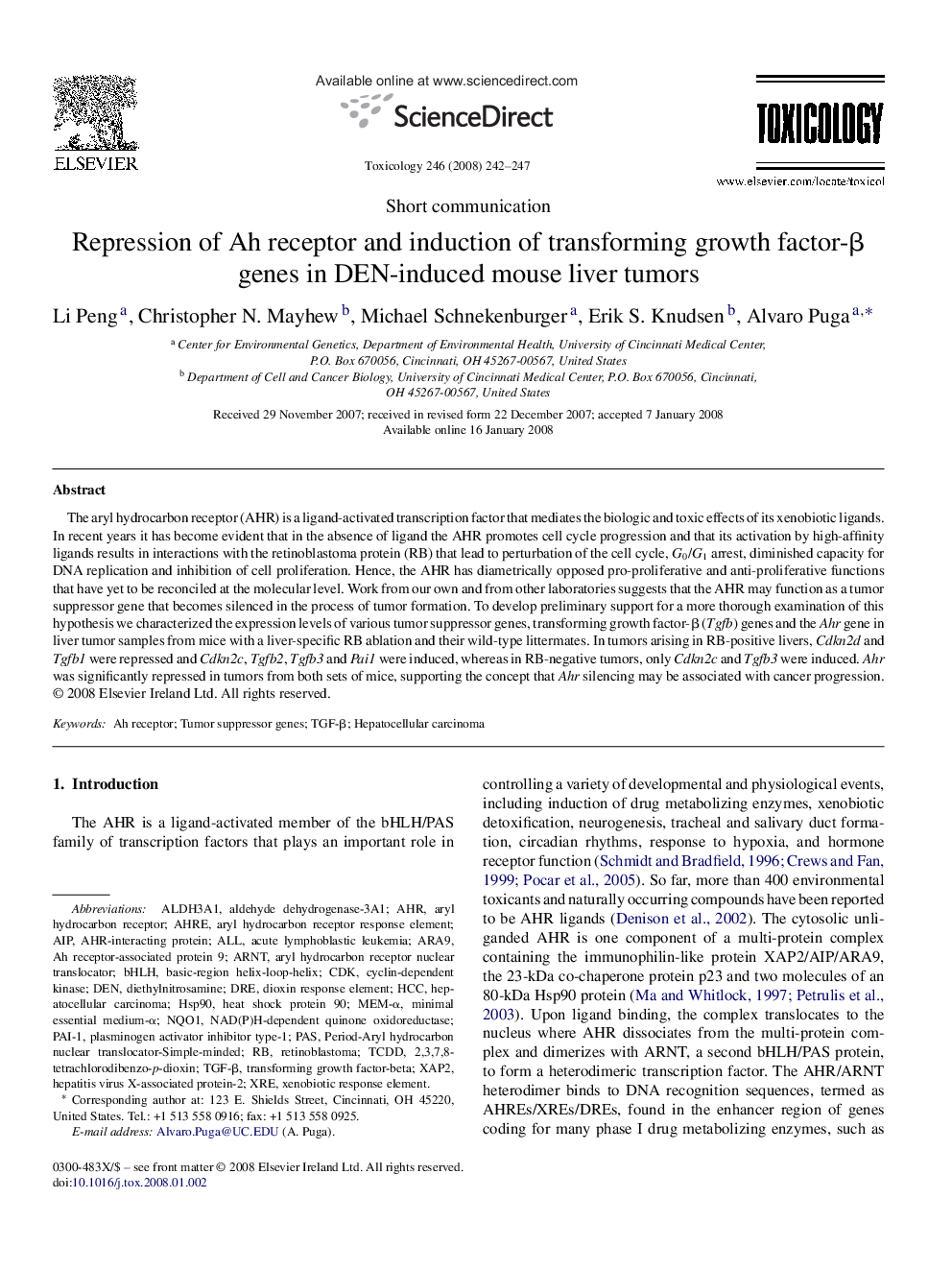| Article ID | Journal | Published Year | Pages | File Type |
|---|---|---|---|---|
| 2597380 | Toxicology | 2008 | 6 Pages |
Abstract
The aryl hydrocarbon receptor (AHR) is a ligand-activated transcription factor that mediates the biologic and toxic effects of its xenobiotic ligands. In recent years it has become evident that in the absence of ligand the AHR promotes cell cycle progression and that its activation by high-affinity ligands results in interactions with the retinoblastoma protein (RB) that lead to perturbation of the cell cycle, G0/G1 arrest, diminished capacity for DNA replication and inhibition of cell proliferation. Hence, the AHR has diametrically opposed pro-proliferative and anti-proliferative functions that have yet to be reconciled at the molecular level. Work from our own and from other laboratories suggests that the AHR may function as a tumor suppressor gene that becomes silenced in the process of tumor formation. To develop preliminary support for a more thorough examination of this hypothesis we characterized the expression levels of various tumor suppressor genes, transforming growth factor-β (Tgfb) genes and the Ahr gene in liver tumor samples from mice with a liver-specific RB ablation and their wild-type littermates. In tumors arising in RB-positive livers, Cdkn2d and Tgfb1 were repressed and Cdkn2c, Tgfb2, Tgfb3 and Pai1 were induced, whereas in RB-negative tumors, only Cdkn2c and Tgfb3 were induced. Ahr was significantly repressed in tumors from both sets of mice, supporting the concept that Ahr silencing may be associated with cancer progression.
Keywords
PAI-1TGF-βXAP2ALDH3A1XRENQO1DREARNTbHLHDenAIPTCDDHSP90CDKAHR2,3,7,8-Tetrachlorodibenzo-p-dioxinHCCAh receptoraryl hydrocarbon receptor nuclear translocatortransforming growth factor-betadiethylnitrosamineretinoblastomaAHRExenobiotic response elementdioxin response elementAcute lymphoblastic leukemiaPASALLHeat shock protein 90plasminogen activator inhibitor type-1Tumor Suppressor GenesHepatocellular carcinomacyclin-dependent kinasearyl hydrocarbon receptor
Related Topics
Life Sciences
Environmental Science
Health, Toxicology and Mutagenesis
Authors
Li Peng, Christopher N. Mayhew, Michael Schnekenburger, Erik S. Knudsen, Alvaro Puga,
